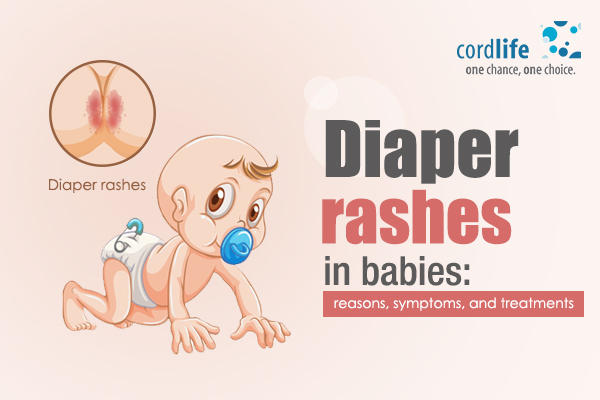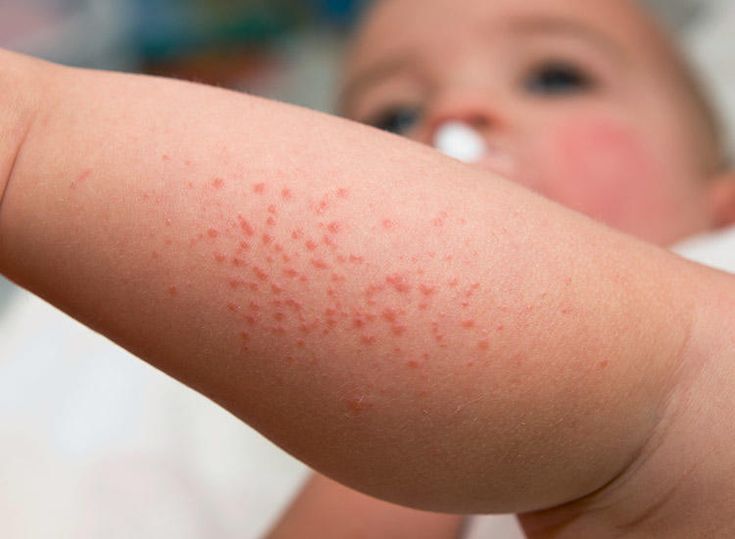Table of Contents
We know that your baby’s health and well-being are your biggest concern. Therefore, any health problem of your baby even if your baby has small diaper rashes, might be worrisome for you. At least half of the diaper-clad babies get nappy rash at some point in time.
Continue reading this article, to understand the types, reasons, symptoms, and treatments of diaper rashes in babies.
Types Of Diaper Rash In Babies
Diaper rashes are mostly mild in nature. However, there are diaper rashes, which can turn out to be really severe, giving rise to painful red welts and cracks on your little one’s skin. Therefore, as a new mum, if you understand the different types of diaper rash in your baby, it will be easier for you to deal with them. So, the types of diaper rash are:
Irritant Contact Dermatitis or Chafing
This is the most common type of diaper rash, which is the result of your baby’s spending a long period of time in direct contact with wet and dirty diapers. That means your little one is wetting the diaper with his or her urine and dirtying it with his or her poop, repeatedly and for long hours, causing irritant diaper rash. In fact, it looks like pink or red patches on the diaper-covered skin.
Candida Dermatitis
Well! This is most commonly referred to as yeast infection, which appears as patches of bright red colour in between the folds and creases of the abdomen and thighs of your little one. It does not just end there. Outside the bright red part, there will be a few red patchy dots.
Seborrheic Dermatitis or Cradle Cap
These usually appear as yellow scales on your little one’s head, but it starts on the face or from the diaper area and spreads out to the other parts of the body.
Impetigo or Bacterial Infection
Although bacterial infection may not be a reason for diaper rash, but certain types of bacteria like staph and strep can give rise to bacterial infection known as impetigo. These are mostly large, pus-filled sores that ooze yellowish fluid and crust over.
Atopic Dermatitis or Eczema
These are mostly dry, itchy and red patches that appear on the face and scalp, besides the diaper area.
Causes of Nappy Rashes In Infants
From the types of nappy rashes, mentioned above, you must have already understood that your baby’s skin develops diaper rashes when:
- The skin rubs against the wet area for too long and gets irritated.
- The pee alters the pH level of your little one’s skin.
- The diaper rashes can be a result of a reaction to detergent and soaps on your baby’s skin.
- Starting new food can change the content and frequency of your baby’s poop giving rise to diaper rashes.
- In fact, diarrhoea and reaction to antibiotics can make the existing rashes worse.
Treatment For Diaper Rashes In Babies
Since most of the symptoms of diaper rashes in babies may be warm to touch, slightly reddish in colour, and mild in nature, they can be treated at home. Take a look at the diaper rash treatments at home curated for you here:
Keep The Area Clean and Dry
While you’re changing your baby’s nappy, take a soft cloth or wipes and clean the area gently. Avoid rubbing your little one’s skin too hard. In fact, put a towel or disposable waterproof pad underneath your baby and allow him or her to spend some diaper-free time.
Change Diaper Quite Often
Even a little bit of trapped moisture may be a reason for diaper rash and irritation in your baby. Therefore, try to change your baby’s diaper whenever it is wet.
Try To Use Disposable Diapers
The cloth diapers may not be very hygienic for your cuddly little one. Therefore, cloth diapers may not be a very good choice for him or her. Choose super-absorbent disposable diapers instead to help in healing your baby’s nappy rashes faster.
Check Your Little One’s Diaper Size
If you make your little one wear a diaper that is too large, it can rub and can cause friction against your baby’s skin. However, if you make your little one wear a diaper that is too tight, it can add to the moisture on the skin, thus increasing the nappy rashes in your baby, rapidly. Therefore, check the size of your baby’s nappy before making him or her wear it.
Apply Comforting Pastes and Creams
Apply a cream or paste or any ointment (of course with the permission of your doctor), once you’ve done with the cleaning and drying of your baby’s skin.
Raise The Exposure Of The Airflow
To increase the air exposure of the diaper region, allow your baby to nap without a diaper and apply ointment on the affected areas.
Bathe Your Little One Daily
While bathing your little one, try to use warm water and fragrance–free soap cleanser for the diaper rashes in babies.
Use a squirt bottle of water to clean the area if the rash is severe and keep the baby without a nappy for some time. However, if you notice your little one is having a fever and it is not fading away easily, consult your doctor immediately. To get some more information on baby care, and the benefits of cord blood banking visit our blog page.

